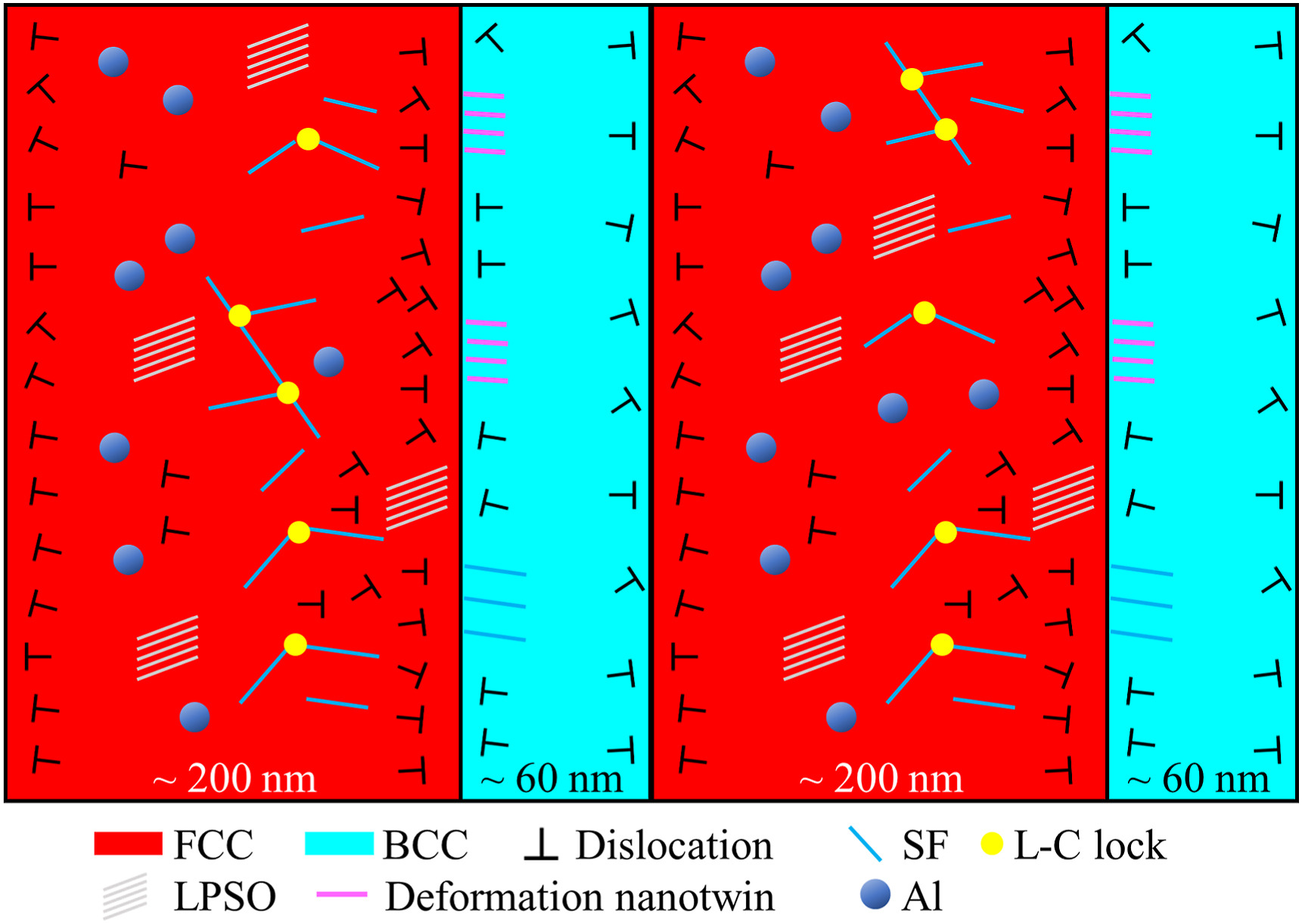·Paper Publications

Indexed by: Journal paper
Journal: Materials Science and Engineering: A
Included Journals: SCI
Document Type: J
Key Words: Eutectic high-entropy alloys;Laser powder bed fusion;Dual-phase nanolamellar structures;Deformation mechanism;Strengthening mechanism
Date of Publication: 2023-10-05
Impact Factor: 6.4
Abstract: Recently, the AlCoCrFeNi2.1 eutectic high-entropy alloy (EHEA) prepared by laser powder bed fusion (LPBF) could reach a good balance of strength and ductility. The strengthening effect was only qualitatively clarified, however, quantitative analysis remained unclear. In this study, the quantitative analysis of strengthening mechanisms and the relationship between microstructural characteristics and tensile properties were revealed in depth. The AlCoCrFeNi2.1 EHEA with FCC and BCC dual-phase nanolamellar structures (interlamellar spacings of 200–300 nm) fabricated by LPBF achieved an excellent combination of high yield strength (1116 MPa) and fracture elongation (20.3 %). Compared with as-cast EHEA samples, the FCC/BCC nanolamellar interfaces in the LPBF-printed AlCoCrFeNi2.1 EHEA were still semi-coherent but with a higher degree of coherency, and the Al concentration in the FCC phase increased. Post-deformation analysis showed that there were high-density dislocation pile-up and slip, stacking faults (SFs), and Lomer-Cottrell (L-C) locks in the FCC phase, and there were deformation nano-twins and SFs in the BCC phase. The back stress generated in FCC/BCC phases during tensile deformation could maintain the plastic co-deformation of the two phases. The theoretical calculation revealed that the strengthening mechanisms mainly stemmed from the nanolamellar structures, dislocation strengthening, and the solution strengthening induced by the increased Al concentration in the FCC phase. The calculated result (1096.3 MPa) was consistent with the experimental value, and the nanolamellar structures strengthening (∼720.7 MPa) was the main contributor. This work provides a theoretical quantitative understanding of the strengthening mechanism of the AlCoCrFeNi2.1 EHEA fabricated by LPBF and references for the strengthening mechanism of additively manufactured EHEAs.
Links to published journals: https://doi.org/10.1016/j.msea.2023.145784
